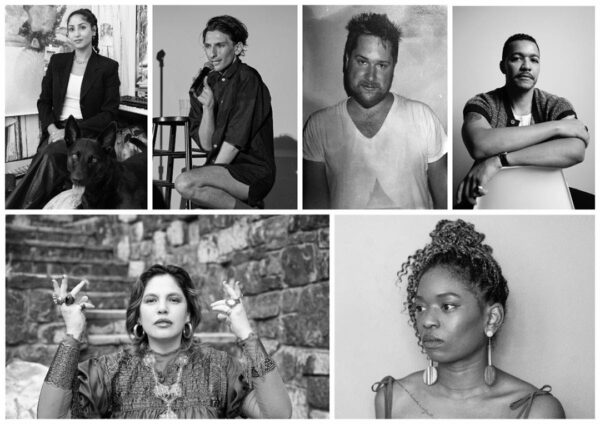The Chinati Foundation has named Farah Al Qasimi, Morgan Bassichis, Willie Binnie, Carmina Escobar, Troy Montes Michie, and Charisse Pearlina Weston as its 2024 Artists-in-Residence.
Established in 1989 by Donald Judd, the foundation’s Artist-in-Residence (AIR) program has hosted more than 175 artists from over 25 countries. Unlike many residency programs, Chinati’s does not require artists to create new work; instead it emphasizes that artists should have time for ideation.
Each year the AIR program hosts four to six artists for two-month residencies. During their time in Marfa, artists are provided with an apartment, a studio, and access to the Chinati collection and archive. Additionally, artists receive a stipend of $1,500 to support travel needs and the purchase of art materials. Another aspect of the program that makes it unique is that there is not an application process. Rather, it is a nomination-based residency. The 2024 nomination committee was comprised of artists, arts administrators, and curators from across the country. A new group will form the nomination committee in 2025.
Learn more about the 2024 resident artists below, via bios provided by Chinati.

Clockwise from top left: Farah Al Qasimi, courtesy of Ally Caple; Morgan Bassichis, courtesy of Mario de Lopez; Willie Binnie, courtesy of Ivy Dement; Troy Montes Michie, courtesy of Hao Nguyen; Charisse Pearlina Weston, courtesy of the artist; and Carmina Escobar, courtesy of Laura Pardo.
Farah Al Qasimi makes photographs, films, and music. Often working with large-scale vinyl imagery and a multiplicity of photographic prints and screens, Ms. Al Qasimi is interested in the internet and its hierarchies of information and emotion. She also loves the complexity of storytelling and value building in children’s cartoons, and many of her video works include primary narrators who are anthropomorphized. She has a highly collaborative practice and has worked with hand-sewn puppets, falcons, African land snails, exorcists, and, most recently, a Jack Sparrow impersonator.
Morgan Bassichis is a comedic performer who has been described as “fiercely hilarious” by The New Yorker. Their work often uses humor, music, and popular education to activate lineages of Jewish anti-zionist thought and queer radicalism.
Willie Binnie’s work confronts the American mythos—the imagery enshrouding a land with a complex, often dark and troubling, past and present, cloaked in a smoke screen of stoic heroism—as well as larger concerns surrounding notions of power, nationalism, bigotry, war, land, death, and the visual markers connected to each. His art prods the complicated and often paradoxical nature of these issues to examine the social constructs that underpin them.
Carmina Escobar is an extreme vocalist, improviser, sound, and intermedia artist. Ms. Escobar investigates and expresses emotions, politics, states of alienation, and the possibilities of interpersonal connection. Through voice performances, installations, and video pieces, she seeks to challenge our understandings of musicality, gender, queerness, race, the spoken word, and the foundations of human communication. As an immigrant from Mexico, key to her practice is the exploration of interstitial states of being—suspensions between worlds, politics, and borders.
Troy Montes Michie is an interdisciplinary painter and educator. Using collage as his methodology, Mr. Montes Michie engages with archives to reveal the complexity of the gaze and trouble the representation of powerful groups targeted for oppression. Employing an array of materials, Mr. Montes Michie investigates the influence of print media in mass culture, disrupting modes of consumption that historically erase and fetishize specific communities.
Charisse Pearlina Weston is a conceptual artist and writer whose practice is grounded in a deep material investigation of poetics and the autobiographical in the service of Black people.


